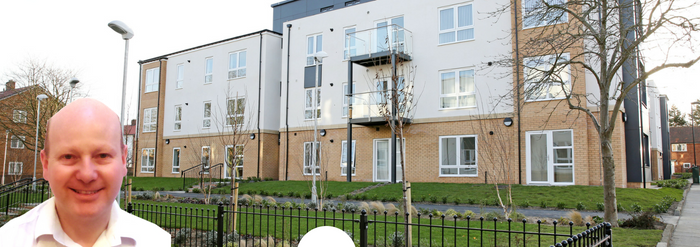Tom Jarman, Environmental Sustainability Co-ordinator, Your Homes Newcastle
On March 28th, BIM Regions North East held its latest event, focussing on BIM for Clients – in this case construction clients, and in particular social landlord and public sector clients.
Why would we focus on this group? Because this group have enormous potential as a carrier for change. This isn’t just about BIM, as this group can also heavily influence newbuild quality and standards, and retrofit standards, skills and scale. All of these things need client pull, and a sector that spends over £10bn a year on construction and maintenance, and consistently commissions between 20-25% of all newbuild housing annually, can exert a great deal of client pull.
But BIM Regions NE, as the name suggests, is concerned with BIM and in this case the event focussed on social landlords and Local Authorities. Why?
Because they manage information, and the quality of information has an enormous impact on asset investment, allocation of resources, 30 year plans, day to day operations and ultimately customer experience. Every time someone drives out to a property to check for information that should already be there it wastes money and time, introduces delay, and undermines the opportunity for excellent customer satisfaction.
So it’s the ‘I’ in BIM that we are focussed on. BIM is often presented in terms of technology, but it is predominantly a cultural challenge. It challenges how you think about information, how it flows and what you want to do with it. We tend to think of a completed project in terms of the physical outcome, but the most expensive stage in the life of an asset is the operational phase. It becomes even more expensive if you don’t have the right information, accurately structured, and integrated into your information systems.
And as I’ve said, BIM needs social landlords and local authorities as a very significant client group. This concerns both how they drive adoption through the Tier 1 supply chain (where quality of can adoption vary) and how they engage Tier 2 suppliers and SMEs. There is much that can be done to build competence and consequently business resilience in the supply chain and this will feed into the quality of both projects and outcomes – as well as benefit clients (“a great organisation has a great supply chain”). It will also support employability, financial and digital inclusion, and transferable skills for long term employment opportunities in the communities that social landlords and Local Authorities serve.
However, there was a distinct lack of clients at the March event. In reality, it’s hard to get social landlords and Local Authorities in the room and talk about the value and implications of BIM. To some extent there is an obvious barrier to this; it isn’t mandated, and there isn’t any money for doing it. But we see BIM as a very significant carrier of cultural change, supporting better design, construction programmes which are safer, on time and to budget, and operational cost effectiveness.
Some people have had their fingers burnt by BIM, and there is a common misconception that it will cost you more. Competent clienting mitigates this risk. But there is a real opportunity to pull through value – if you are prepared to engage. BIM isn’t passive.
And we’d really welcome the opportunity to get you in the room to explore that with you…
The presentations from the March event can be seen here. If you are interested in hearing more about BIM please contact Tom Jarman, Environmental Sustainability Co-ordinator, Your Homes Newcastle 07914 750 076.



